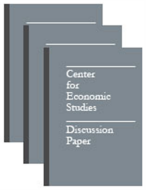
An official website of the United States government
Here’s how you know
Official websites use .gov
A .gov website belongs to an official government organization in the United States.
Secure .gov websites use HTTPS
A lock (
) or https:// means you’ve safely connected to the .gov website. Share sensitive information only on official, secure websites.
-
//
- Census.gov /
- Library /
- Census Working Papers /
- Evolving Property Rights and Shifting Organizational Forms: Evidence From Joint-Venture Buyouts Following China’s WTO Accession
Evolving Property Rights and Shifting Organizational Forms: Evidence From Joint-Venture Buyouts Following China’s WTO Accession
Evolving Property Rights and Shifting Organizational Forms: Evidence From Joint-Venture Buyouts Following China’s WTO Accession
Abstract
China’s WTO accession offers a rare opportunity to observe multinationals’ response to changes in property rights in a developing country. WTO accession reduced incentives for joint ventures while reducing constraints on wholly owned foreign subsidiaries. Concomitant with these changes was a more liberal investment environment for indigenous investors. An adaptation of Feenstra and Hanson’s (2005) property rights model suggests that higher the productivity and value added of the joint venture, but the lower its domestic sales share, the more likely the venture is to be become wholly foreign owned following liberalization. Theory also suggests that an enterprise with lower productivity but higher value added and domestic sales will be more likely to switch from a joint venture to wholly domestic owned. Using newly created enterprise-level panel data on equity joint ventures and changes in registration type following China’s WTO accession, we find evidence consistent with the property rights theory. More highly productive firms with higher value added and lower domestic sales shares are more likely to become wholly foreign owned, while less productive firms focused on the Chinese market are more likely to become wholly domestic owned rather than remain joint ventures. In addition to highlighting the importance of incomplete contracts and property rights in the international organization of production, these results support the view that external commitment to liberalization through WTO accession influences multinational and indigenous firms’ behavior.
Others in Series
Working Paper
Working Paper
Working Paper
Share
Related Information
Some content on this site is available in several different electronic formats. Some of the files may require a plug-in or additional software to view.
 Yes
Yes
 No
NoComments or suggestions?


Top

